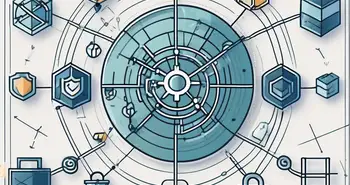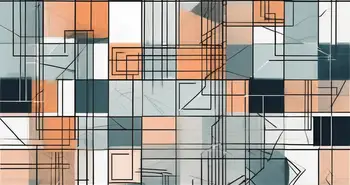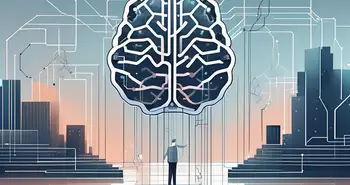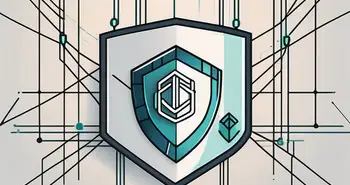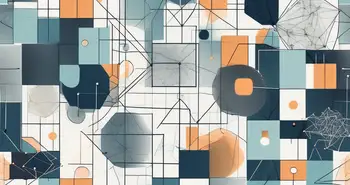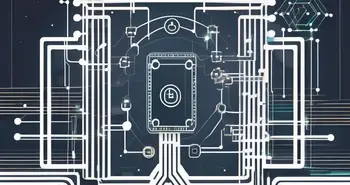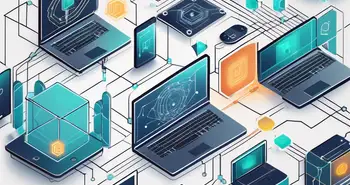How Are Blockchain and Web3 Connected?
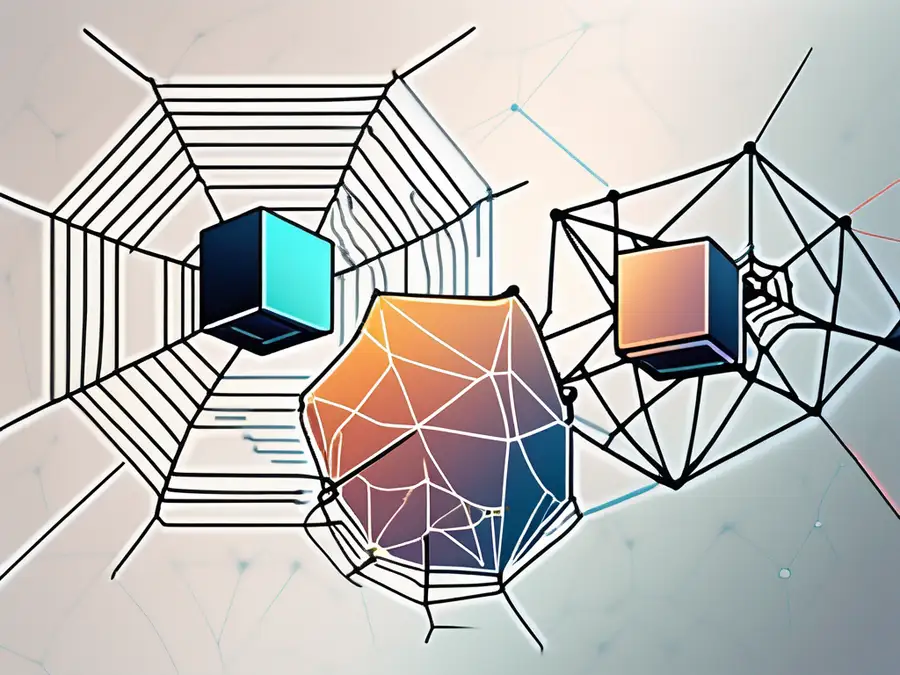
Blockchain and Web3 are two revolutionary technologies that are intricately connected. In this article, we will explore the relationship between these two technologies and understand how they are shaping the future of the digital world.
Understanding Blockchain Technology
At its core, blockchain is a decentralized ledger that records transactions in a secure and transparent manner. It eliminates the need for intermediaries and allows participants to maintain a shared version of truth. This technology gained popularity with the rise of cryptocurrencies like Bitcoin, but its potential extends far beyond the realm of digital currencies.
Blockchain operates on a distributed network, where multiple computers, also known as nodes, validate and verify transactions. These transactions are grouped into blocks and are linked together in a chronological chain. Each block contains a unique cryptographic hash that ensures the immutability and integrity of the data stored within it.
One of the most significant advantages of blockchain is its ability to provide transparency. By allowing all participants to have access to the same information, blockchain enhances trust and eliminates the need for intermediaries to validate transactions.
The Basics of Blockchain
Blockchain technology operates on a peer-to-peer network, removing the need for central authorities and reducing the risk of single points of failure. This decentralized nature ensures that no single entity has control over the entire system, making it resistant to censorship and manipulation.
Furthermore, blockchain utilizes advanced cryptographic techniques to ensure the integrity and confidentiality of stored data. The cryptographic hashes generated for each block not only verify the authenticity of the data but also make it virtually impossible to tamper with the information contained within the blockchain.
Once a transaction is recorded on the blockchain, it cannot be altered or deleted. This immutability provides a reliable and auditable history, making blockchain an ideal solution for industries that require a transparent and tamper-proof record of transactions.
In addition to its security and immutability, blockchain technology offers efficiency benefits. By eliminating intermediaries and automating processes, blockchain reduces costs and speeds up transaction settlement. This streamlined approach not only saves time and resources but also minimizes the risk of human error.
Key Features of Blockchain
Blockchain technology offers several key features that make it a powerful tool in various industries:
- Decentralization: Blockchain operates on a peer-to-peer network, removing the need for central authorities and reducing the risk of single points of failure. This decentralized nature ensures that no single entity has control over the entire system, making it resistant to censorship and manipulation.
- Security: Blockchain utilizes advanced cryptographic techniques to ensure the integrity and confidentiality of stored data. The cryptographic hashes generated for each block not only verify the authenticity of the data but also make it virtually impossible to tamper with the information contained within the blockchain.
- Immutability: Once a transaction is recorded on the blockchain, it cannot be altered or deleted. This immutability provides a reliable and auditable history, making blockchain an ideal solution for industries that require a transparent and tamper-proof record of transactions.
- Efficiency: By eliminating intermediaries and automating processes, blockchain reduces costs and speeds up transaction settlement. This streamlined approach not only saves time and resources but also minimizes the risk of human error.
Blockchain's Impact on Different Industries
The potential applications of blockchain are vast and diverse. From finance to supply chain management, healthcare to voting systems, blockchain has the power to revolutionize multiple sectors.
In the financial industry, blockchain enables faster and more secure cross-border transactions and eliminates the need for intermediaries. It also facilitates the creation of programmable money, enabling the automation of complex financial agreements.
In supply chain management, blockchain provides transparency and traceability, allowing consumers to verify the authenticity and origin of products. This technology can help combat counterfeiting and ensure ethical sourcing.
Blockchain also has the potential to transform the healthcare industry by securely storing and sharing patient records. This can improve the efficiency of healthcare delivery, enhance data privacy, and enable better collaboration among healthcare providers.
Furthermore, blockchain can revolutionize voting systems by providing a transparent and tamper-proof platform for recording and counting votes. This technology has the potential to enhance the integrity of elections and increase voter trust.
Overall, blockchain technology has the potential to disrupt and transform various industries by providing transparency, security, immutability, and efficiency. As the technology continues to evolve, its impact is expected to grow, unlocking new possibilities and reshaping the way we conduct business and interact with digital systems.
Exploring Web3
In the simplest terms, Web3 represents the next generation of the internet, a decentralized and user-centric web. It aims to shift control from central authorities to individual users, empowering them to have full ownership and control over their data and digital assets.
What is Web3?
Web3 encompasses a wide range of technologies, including blockchain, decentralized applications (dApps), smart contracts, and peer-to-peer networks. At its core, Web3 aims to enable direct peer-to-peer interactions without relying on intermediaries or centralized platforms.
The Evolution from Web2 to Web3
Web3 is a direct response to the limitations of the current web, known as Web2, where user data is often exploited and controlled by centralized entities. Web2 has facilitated the rise of tech giants and created a digital divide between those who control the platforms and the users who generate the content.
Web3 seeks to reverse this power dynamic and return control to the users. By leveraging decentralized technologies like blockchain, Web3 enables the creation of applications that operate on peer-to-peer networks, where data ownership and privacy are in the hands of individuals.
The Role of Web3 in Decentralization
Web3 is a key driver of decentralization, as it provides individuals with the tools and infrastructure to reclaim control over their digital lives. It promotes the principles of trust, transparency, and sovereignty, ensuring that users are not locked into closed ecosystems or subject to data exploitation.
Decentralized applications (dApps) built on Web3 allow for more transparent and collaborative environments, where users have equal rights and can participate in decision-making processes. Smart contracts, powered by blockchain, enable the automation of complex agreements, providing trust without the need for intermediaries.
The Connection Between Blockchain and Web3
The relationship between blockchain and Web3 is symbiotic, as blockchain serves as the foundational technology for Web3's decentralized vision.
Blockchain as the Backbone of Web3
Blockchain technology provides the infrastructure necessary for Web3 to operate securely and transparently. Through blockchain, Web3 applications can leverage the immutability and trustworthiness that this technology offers.
Smart contracts, which are self-executing agreements built on blockchain, enable decentralized applications to operate without the need for intermediaries. They ensure that transactions and conditions are executed as programmed, granting users greater control and eliminating the risk of manipulation.
How Blockchain Enables Web3's Decentralization
Blockchain is the key enabler of Web3's decentralized nature. By utilizing blockchain technology, Web3 applications can ensure data integrity, security, and user sovereignty.
Blockchain's decentralized nature makes it resistant to censorship and tampering. This ensures that users can freely interact with Web3 applications without fear of their data being controlled or manipulated by centralized entities.
Security and Transparency: Shared Attributes of Blockchain and Web3
Both blockchain and Web3 prioritize security and transparency as fundamental principles.
Blockchain technology provides secure and tamper-proof record-keeping, ensuring that transactions are transparent and permanent. This transparency is vital for Web3 applications, as it allows users to validate transactions and ensure the integrity of the data they interact with.
Web3, on the other hand, emphasizes user privacy and data ownership. By leveraging decentralized technologies, Web3 applications ensure that user data is not controlled or exploited by centralized entities.
Potential Challenges and Solutions
As with any new technology, the integration of blockchain and Web3 presents various challenges. However, these challenges can be overcome with innovative solutions.
Technical Hurdles in Blockchain and Web3 Integration
Integrating blockchain and Web3 technologies poses technical challenges related to scalability, interoperability, and user experience.
Scalability is a crucial concern, as existing blockchains face limitations in terms of transaction throughput. However, solutions like layer-two scaling and sharding are being developed to address this issue and improve the scalability of blockchain networks.
Interoperability is another challenge, as different blockchains often have their own unique protocols and standards. Efforts are underway to establish interoperability frameworks that facilitate seamless communication and cooperation between different blockchain networks.
Addressing Privacy Concerns in Blockchain and Web3
While the transparency of blockchain is a significant advantage, it also raises privacy concerns. Blockchain records are permanent and visible to all participants, which may not be desirable for certain types of data.
To address this, privacy-focused solutions like zero-knowledge proofs and secure multi-party computation are being developed. These solutions allow for encrypted and confidential interactions on the blockchain while preserving the security and transparency of the underlying technology.
The Future of Blockchain and Web3: Opportunities and Threats
The future of blockchain and Web3 holds vast opportunities for innovation and disruption. However, it also poses certain threats that need to be carefully managed.
Opportunities lie in the potential for financial inclusion, data ownership, and decentralized governance. By leveraging blockchain and Web3 technologies, individuals can have greater control over their financial assets and data, while also participating in governance processes on a global scale.
Threats include regulatory challenges, scalability constraints, and the potential for misuse. As the adoption of blockchain and Web3 technologies spreads, regulators will need to adapt to the new paradigm and strike a balance between innovation and protection. Scalability concerns need to be addressed to ensure the widespread usability of blockchain networks. Additionally, as with any technology, there is always a risk of misuse and illicit activities, which must be mitigated through robust security measures and appropriate governance frameworks.
Personal Advice: As an expert in blockchain and Web3, I encourage you to explore these technologies and their potential. Stay informed about the latest advancements and applications, as this space is evolving rapidly. Consider the impact of blockchain and Web3 on your industry or personal endeavors and embrace the opportunities they present. By understanding and leveraging these technologies, you can position yourself at the forefront of the digital revolution.
FAQ
What is blockchain?
Blockchain is a decentralized ledger that records transactions in a secure and transparent manner. It eliminates the need for intermediaries and allows participants to maintain a shared version of truth.
What is Web3?
Web3 represents the next generation of the internet, a decentralized and user-centric web. It aims to shift control from central authorities to individual users, empowering them to have full ownership and control over their data and digital assets.
How are blockchain and Web3 connected?
Blockchain serves as the foundational technology for Web3's decentralized vision. It provides the infrastructure necessary for Web3 applications to operate securely and transparently.
What are the key features of blockchain?
Blockchain offers decentralization, security, immutability, and efficiency. These features enable trust, transparency, and automation in various industries.
What are the potential challenges in blockchain and Web3 integration?
Technical hurdles such as scalability and interoperability need to be addressed. Privacy concerns in blockchain and Web3 also require innovative solutions.
What is the future of blockchain and Web3?
The future of blockchain and Web3 holds opportunities for financial inclusion, data ownership, and decentralized governance. However, regulatory challenges and misuse are potential threats that need to be managed.

Disclaimer: All investments involve risk, and the past performance of a security, industry, sector, market, financial product, trading strategy, or individual’s trading does not guarantee future results or returns. Investors are fully responsible for any investment decisions they make. Such decisions should be based solely on an evaluation of their financial circumstances, investment objectives, risk tolerance, and liquidity needs. This post does not constitute investment advice.

Painless trading for everyone
Hundreds of markets all in one place - Apple, Bitcoin, Gold, Watches, NFTs, Sneakers and so much more.

Painless trading for everyone
Hundreds of markets all in one place - Apple, Bitcoin, Gold, Watches, NFTs, Sneakers and so much more.

